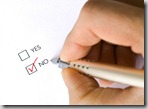How can small business owners with shoestring budgets and even less time create a powerful and professional looking visual web presence for their brand? While your website is only one brand facet, it’s an important one. I work with clients on their brand story and messaging but how can they communicate that brand online? Nancy Owyang, Creative Director and Owner of Eye 2 Eye Graphics, is a cherished partner of mine and produces amazing, simple and elegant work. She works with small business owners to make their business memorable through meaningful, strategic, and professional graphic design.
Her mission? To provide small business owners high quality, professional brand identity design that will make them stand out in a crowd and allow them play with the big kids… all at a price they can work into their budget.
I sat down to talk to her about what people are doing wrong with their websites and how small businesses can create big brands.
RS: Nancy, what are three helpful hints you have for folks building a business website from scratch? Or put another way, what are some of the biggest mistakes that make you cringe?
NO: Hmmmm… good question, so besides my obvious 3 hints of:
- Don’t do it yourself
- Don’t have your neighbor’s 16 year old nephew do it, and
- Do find a designer and programmer who work and collaborate together—it’s rare that both a programmer’s mind and a designer’s mind can live in the same body
I’ll dig a little deeper and give you maybe some less obvious hints.
Have a plan. This can be something that a client brings to the project, or we can create it together, but having a plan is important for any project, especially a web site. Web sites have a tendency to grow and evolve, which is one of the beautiful things about them, but this makes having a plan even more important. This is the foundation that will guide us to make decisions about the site to make sure we stay on track and true to the business goals—in essence just because you can do it on the web doesn’t mean you should. A few things to think about for the plan:
- How the site will be used by current clients and potential clients?
- Is it a place that users come back to over and over? Or is it mostly just visited when they are considering hiring you?
- What is the experience that you want to create?
- Does the client need to be able to easily make updates to the site?
Think ahead. You’d think that this might fall into the obvious hint category, but it’s a
good one to point out. Things to think ahead about include:
- Timeline. Rome wasn’t built in a day, and neither will your web site. Good site design and development takes time. For a smaller site, expect and plan for at
least 3 months from idea to launch. - How do you plan to edit the site in the future? Many small business owners want to be able to edit their site themselves: this will require the back-end of the site to be built in such a way that you can do this without learning to be a programmer in your spare time. If you’re a larger business, this may be a piece that you hire out, so the site could be built using a different back-end framework.
- As your business grows, how will your web site change? Will you need a shopping cart? Do you want a built-in blog? Will you want to add a calendar of events? These things and more are things to think about when setting up the site initially.
Work with professionals for all parts of the site. An effective web site is an investment in your business and if planned appropriately will last you for several years with just minor updates to keep it fresh. So with that in mind, not only do you need a great designer and programmer pair, but you will also need a great copywriter to execute the voice of the site. This is important not only because this is your chance to communicate with your clients, and introduce yourself to potential clients, but this is what the search engines see too! Working in your search engine optimized keywords into the copy of the site so it doesn’t seem awkward and contrived can take some finesse. If you want to write the copy yourself, at the very least I recommend having it reviewed and edited by a professional copywriter who has experience writing for the web.
RS: What key factors do you consider when you design and develop a client website?
NO: The main thing that comes to mind is how important it is to put yourself in the seat of your website user. Who are they? Are they potential clients checking you out? Are they current clients? Are they just passing through doing research or gathering ideas? Do they come back over and over again? How do they interact with the site?
Once you know this information it will help you decide what needs to be included in the site, this will also determine how the site is updated, and how often. A site that serves more as a “brochure” site where potential clients come to check you out doesn’t need to be updated as often as a site that has an ongoing interactive relationship with the users. So it’s good to know upfront what site experience you want to build.
RS: In what ways do you see web presence as “the great equalizer” in helping small companies to compete with big brands?
NO: The amazing thing about the web is that every business no matter the size or location is available to people around the globe 24 hours a day, 7 days a week. If your site is set up properly with professional design, well-written content, and search optimized
programming, your site can pop right up at the top of the search with the “big
kids on the block”. The potential client never has to know that you are a solo-entrepreneur working in your PJs out of a home office, while you have 2 kids under the age of 5 running around. You decide how big you want to be on the web and make it happen.
This comes with a warning… since the options are potentially never ending it is important to have a plan and a target, and stick to it. Think of it this way—aim for the bull’s eye, but if you get hits on the other part of the board you still get the points!
Just because the web gives us the platform to compete with the big brands, you need to be honest and ask yourself, is that what you want? Once you have your answer, position your site accordingly using the visuals, the voice, and all the search engine optimization goodies. Your website is your virtual brick and mortar. How big do you want it to appear to the site visitors?
About Nancy:
As the owner of Eye 2 Eye Graphics, LLC, Nancy Owyang is an award-winning designer with strong branding experience. She has aided a variety of clients in rebranding their businesses, including Women Business Owners, SLN Stage + Design, Delane Engineering and many more. Clients praise Nancy’s design sensibilities and her ability to first understand an owner’s mission, and then to translate that complex identity into a graphic representation. Her branding and design solutions are practical and unique, detail-oriented, on time, and on budget. To view a sampling of Nancy’s work please visit her online portfolio.




